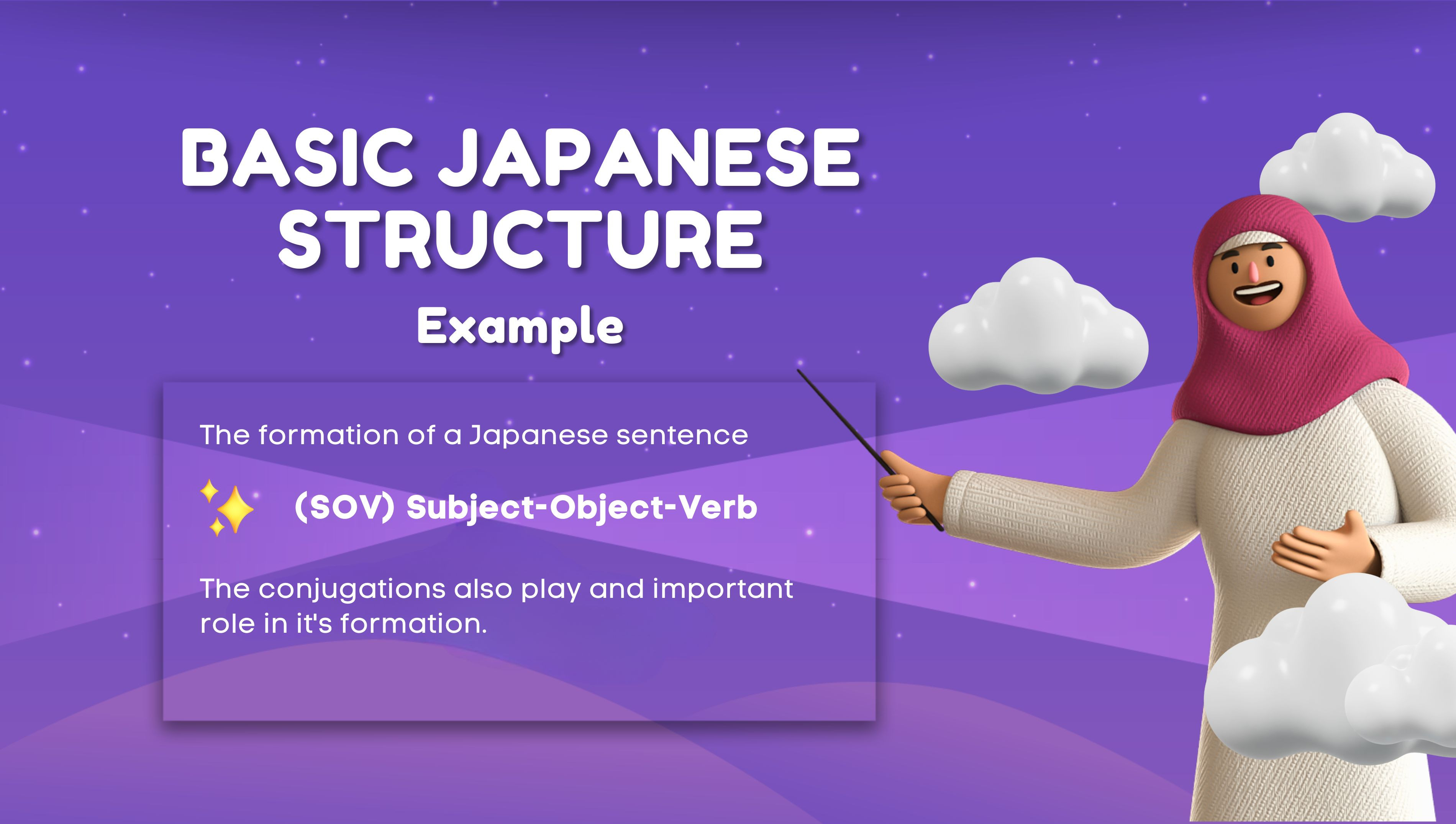BASIC JAPANESE STRUCTURE
21/04/2025
2236

Contents
Japanese grammar sentence structure is entirely different from the formation of an English sentence. Generally, in English, a sentence is written according to the rule that is, Subject-Verb-Object (SVO).
The formation of a Japanese sentence is (SOV) Subject-Object-Verb; the conjugations also play and important role in it's formation.
1. Basic Structure in Japanese Grammar
In both Japanese and English, the basic sentence structure is: subject-object.
- For example:
In English, we say "This is a pen" In Japanese we say "Kore ha pen" or これはペン。
2. Action Sentences
Adding parts to a sentence can be confusing, but it's actually quite flexible. For example. if there's a requirement to add time. location or preposition, they can be placed anywhere in a Japanese grammar sentence structure, as long as they are marked with the correct particle. In such a case, do keep in mind that the verb is always at the end of the Japanese sentence. Usually, a Japanese sentence is still meaningful even without a subject. Interestingly, removing the subject sounds natural in Japanese sentences.
3. Formal & Informal Speech
Can you judge if the tone of a Japanese sentence is formal or informal?
Here's a tip!
It's always the ending of a Japanese grammar sentence structure, particularly the "grammar" that depicts if the sentence is formal or informal.
4. Japanese Particles in Sentence Structure
Japanese grammar is nothing without particles because they denote intonation, connectors like "and", provide possessive forms and provide the means to ask questions.
(wa/ha): the topic marking particle; follows the topic of a sentence
(ga): to emphasize something; to distinguish it from the rest; also used when you're first introducing the subject
(wo): signals the object of the sentence; most of the time, it follows noun or a noun phrase
(ni): indicates a place or the direction something is moving towards
(de): emphasizes location rather than direction
(to): and
(no): indicates possession
(ka): question indicator
5. Japanese Verbs
Japanese tenses and conjugation differ a lot from other languages, and that's what makes it a little bit more confusing.
As you know, English has past, present and future tenses, but in Japanese, its only present and past tense. these tenses stay unchanged regardless of who's performing the action.
You may find learning Japanese grammar sentence structure to be a lot harder than you think but once you start memorizing it little by little, it won't be as complicated as you think.
👉 Follow TODAI Japanese to learn Japanese better and know more about the latest information!
Category
App introduction
Study tips
Interested

21/04/2025
19504
Stay Updated with Ease: Introducing the Easy German News App for Language Learners
Do you struggle to improve your German language skills? Do you find it challenging to read news articles in German? If so, then Easy German News is here to help

21/04/2025
17376
Introducing the Easy German News App's Video and Newspaper Reading Features
The application has recently introduced the feature of watching videos and reading newspapers, making the learning process even more exciting.

21/04/2025
13154
Top 5 best apps to learn German vocabulary
One of the biggest hurdles to overcome when learning is building up your vocabulary. In this blog post, we will explore the top 5 best apps to learn German vocabulary

21/04/2025
12528
How to Learn German Vocabulary Fast?
If you're learning German, you know that memorizing hundreds or even thousands of German words can be overwhelming. In this blog post, we will discuss some effective tips...
Your Comment
Comment (0)

